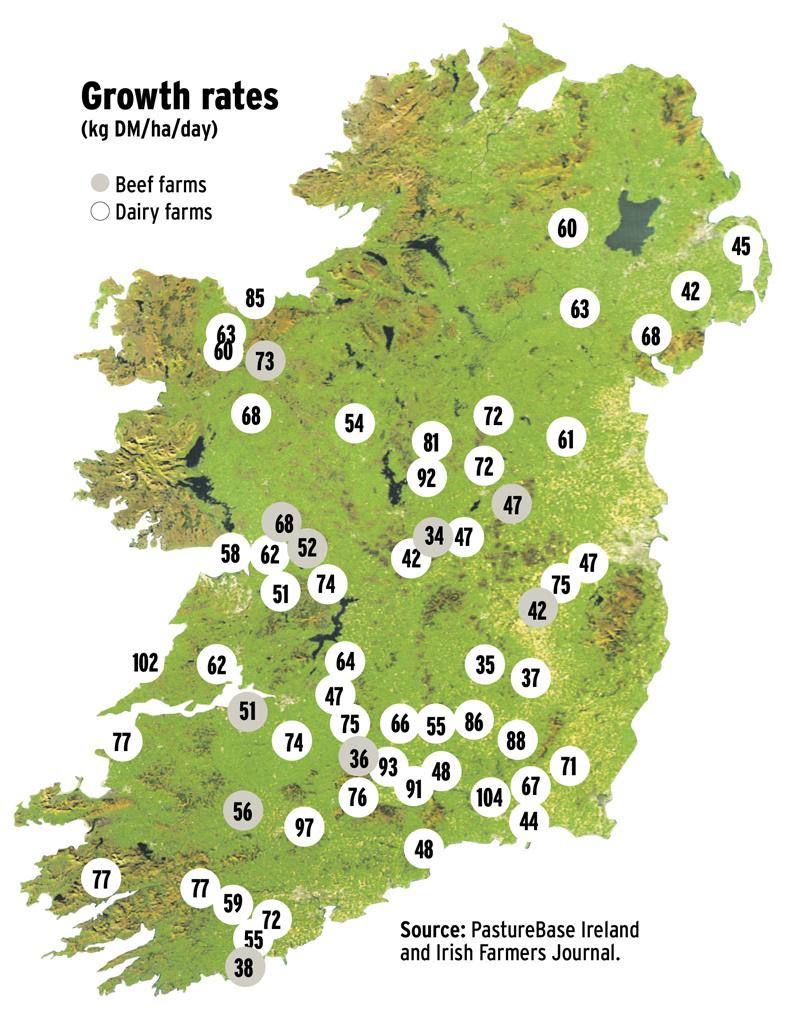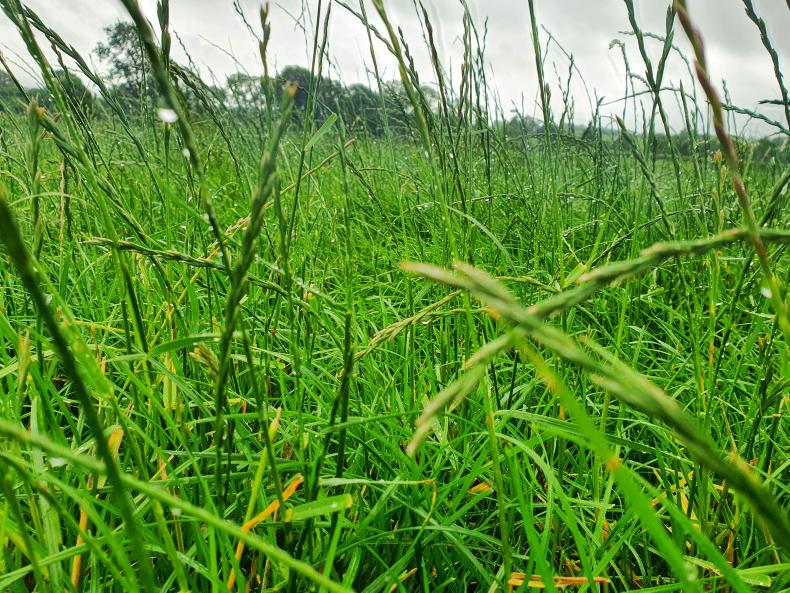The rain over the weekend has turned grass growth around and an increase in growth rates for the coming week can certainly be expected, with more mixed and unsettled weather expected over the weekend.
The average growth around the country this week was 65kg/day. The attention now needs to be on managing quality.

Pre-grazing yields should be kept between 1,200kg/ha and 1,400kg/ha where possible and target a cover/LU of 180kg on dairy farms and 12 days grass ahead on beef.
Make sure your supplementation level is adjusted back down as growth increases to help keep grass under control.
The DM content of new grass may be low (15% to 16%) because of its rapid growth, so supplement may still be needed even when there is plenty of fresh feed available.
It is important to get pre-grazing yields back to at least 1,200kg/ha before pulling supplementation back completely.
Walking the farm every five days will be essential in maintaining the grass quality and identifying surplus early.

Where surpluses do arise, use the opportunity to correct grass quality by taking out paddocks that may have gone stemmy.
Avoid topping/pre-mowing all the paddocks in this rotation as you will waste feed and affect regrowth.
Reseeds done in late April/early May should be grazed, depending on how the moisture deficiency affected them but if there is a cover of 800kg/ha plus it’s time to graze them. Ideally reseeds should be grazed at a cover of 800-1,100kg/ha for the first two grazings post-reseeding and pre-grazing yields should not exceed 1,200kg for the rest of the year and should be grazed to a residual of 4 cm, to ensure that the grass and any clover that maybe included fully establish in the sward.
Declan Marren
THRIVE demonstration farm, Cashel, Co Tipperary
The farm has received over 50mm of rain in the last five or six days. It has really freshened things up. After-grass from the first-cut silage is just ready for grazing so calves are on really good leafy swards at the moment. The two oldest batches of calves have been grouped together and we have stopped meal-feeding this group as of this week. The next batch of calves is still getting a kilo a day as they are younger and not weaned as long. Elsewhere, there are still a couple of paddocks that have headed out even at low covers. Once they are grazed this time, the regrowth should be much better quality now that there is moisture in the ground. While the growth figure is still below demand this week, I expect that to be corrected by next week.
Robertstown, Co Kildare
Growth has jumped from 29kgDM/ha last week to 42kgDM/ha this week so the pressure is starting to be relieved. There was areas of the fields burning up like in 2018 but hopefully this rain will rectify that. We will be going out with about 30 units of nitrogen on grazing ground in the coming days to help growth rates. I had to graze most of the silage ground after the first cut so we will get some ground closed for second cut shortly. Our demand has been reduced in the last few weeks as we finished some cattle off grass. It was good to get them away when we did as grass supply was starting to get scarce. Cows and calves are still going well, we are just coming to the end of the breeding season. I plan to scan in two weeks’ time and depending on the results we’ll see where we go.
Tullamore Farm, Co Offaly
We finally got rain here over the last week and you could visibly see things green up. However, the moisture has not been reflected in the growth figure just yet. We spread 40 acres with a bag of pasture sward to the acre last Thursday before the rain to boost things along.
We had been feeding silage to cows but that has stopped since Monday. They are in a cover of 1,300kg DM/ha now and should get four or five days in that paddock. The next one they are due to go into is over 800kg DM/ha as of yesterday so should be ready for them by then. There is still a lot of stem in some paddocks – some topping will need to be done post-grazing.
Dry ewes are following a batch of cows and calves to clean up after them.






 This is a subscriber-only article
This is a subscriber-only article










SHARING OPTIONS: